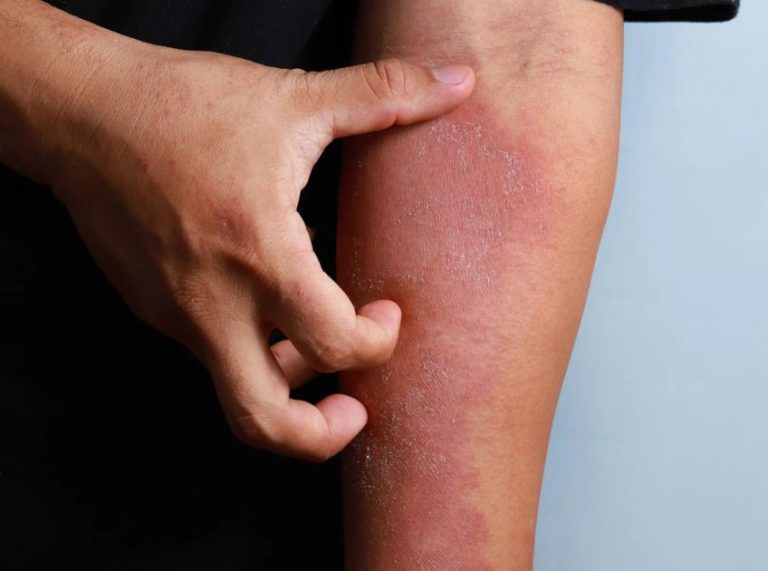
Important: This article is for informational purposes only. Please read our full disclaimer for more details.
Have you hurt your ankle, and are you not sure if it’s broken or sprained?
We understand how painful and discomforting a hurt ankle could be but knowing if it is broken or just sprained is essential to get the right treatment. It is not possible to determine a broken ankle vs. sprained ankle with a physical examination. Therefore, visiting a doctor and undergoing an X-ray is the last resort.
Let’s learn a little more about sprained ankle and broken ankle to understand both conditions better.
Difference Between Broken Ankle and Sprained Ankle
Broken Ankle

Broken ankle means the bone or bones around the ankle joint has been fractured. There are three bones around the ankle joint namely, tibia, fibula and talus. If all or any of these bones break due to injury it is called broken ankle.
Injury is the most common cause of broken ankle. It could be an injury due to sports or an accident. The level of breakage could be severe, requiring surgery or a hairline that takes less time for recovery. Surgery may take two months to 2 years for complete recovery.
Sprained Ankle

When the ligaments around the ankle joint get an injury, it is called sprained ankle. Often, sprain occurs due to overstretching or twisting. Usually, the outer ligaments get sprain in an injury. Sprain in the inner ligaments is less common.
There could be different reasons for ankle sprain among which twisting of ankle while falling is the most common. Sometimes, you land on your side foot during some physical activity like running or jumping that may cause ankle sprain.
If the level of damage to the ligament is minor, the sprain resolves after a few days. However, sometimes the severity can be more, which is divided into grades-
- Grade 1– It is a minor case of ankle sprain in which the ligaments are overstretched but not torn. It heals faster.
- Grade 2– In this, the ligaments are torn partially, taking more than one month to completely heal.
- Grade 3– The ligaments are torn completely, taking months or years for complete recovery.
Broken Ankle Vs. Sprained Ankle
Even though most of the symptoms of both broken and sprained ankle are the same, there are a few telltale signs that differentiate the two. Below is the table mentioning the symptoms of both the conditions-
| Symptom | Broken ankle | Sprained ankle |
| Pain | Yes (immediate and sharp) | Yes (intensity varies) |
| Swelling | Yes | Yes |
| Bruising | Yes | Yes |
| Tenderness | Yes | Yes |
| Instability | Yes | Yes |
| Difficulty in moving | Yes | Yes (In severe cases) |
| Popping sensation | Usually, no | Yes |
| Visible deformity | Yes (If ankle is dislocated) | No |
If you have intense pain that is getting worse over time, it could be because of a sprained ankle. On the contrary, in a broken ankle, the pain is sharp but doesn’t increase over time. Also, if the injury has happened due to direct impact and not due to twisting or jumping, it could be a broken ankle.
Below is the table differentiating between broken vs. sprained ankle-
| Aspect | Broken Ankle | Sprained Ankle |
| Definition | A break or fracture in one or more of the bones that make up the ankle joint. | Stretching or tearing of ligaments in the ankle. |
| Cause | Usually due to a significant force or trauma, such as a fall, twist, or impact. | Often occurs due to sudden twisting or rolling of the ankle, typically during physical activity. |
| Treatment | Immobilization with a cast or splint Possible surgery, depending on severity Pain management medication | RICE therapy (Rest, Ice, Compression, Elevation) Physical therapy to restore strength and range of motion Pain management medication |
| Recovery Time | Varies depending on the severity of the fracture and treatment. Can take weeks to months. | Typically, quicker than a broken ankle, usually a few days to a few weeks, depending on severity. |
Broken Ankle Vs. Sprained Ankle- Diagnosis
The pain, swelling and discomfort in a broken as well as sprained ankle will compel you to visit the doctor. Usually, an experienced doctor can tell which condition you have based on a physical examination.
However, for confirmation and to know the level of severity, you may need to undergo the following imaging tests-
- X-ray
- CT scan
- MRI scan
- Ultrasound
Broken Ankle Vs. Sprained Ankle- Treatment
Treatment of both the conditions are completely different because different body parts are involved. For broken ankle you may be advised to wear a cast until the bone mends and heals. If the break is severe, the doctor may insert pins to realign the broken bones. Surgery is also recommended to ensure ankle bones stay aligned.
Additionally, pain relief and physiotherapy may be recommended.
For treating a sprained ankle, the RICE method is followed, that include-
- Rest- To keep your feet rested as long as possible
- Ice- Apply ice pack for 15 minutes twice a day
- Compression- Wear elastic bandage to apply pressure around the ankle
- Elevation- To keep your foot elevated above the level of your heart when you’re resting.
Following the RICE method, you may see a significant reduction in pain and swelling over time. Gradually, the ankle will gain strength all over again. In the meantime, you can also take pain relievers to manage pain and discomfort.
Conclusion
Even though the symptoms of broken and sprained ankle appear the same, the former is a more severe type of injury than the latter. Also, broken ankle takes more time to heal than sprained ankle.
If you have had an injury that impacted your ankle, causing pain and swelling, it is better to visit a doctor to get the right diagnosis. The earlier you get the treatment, the sooner you can recover.
Image Source – Canva
Related Articles
- What Might Cause a Sharp Leg Pain that Comes and Goes?
- What Causes A Burning Sensation In The Lower Legs?
- Yoga for Knee Pain – 5 Simple Yoga Poses to Relieve Knee Pain
- Top 5 Ways to Treat Leg Cramps with Apple Cider Vinegar
- Sleeping with Pillow Between Your Legs: 5 Benefits, How to Do It
- Yoga for Sciatica – 6 Effective Poses to Ease Sciatica Pain
- 6 Effective Yoga Poses for Scoliosis Relief
- Does Epsom Salt Help a Sprained Ankle?
- 5 Simple Yoga Asanas For Strong Feet and Ankles
- 5 Simple Exercises to Strengthen Your Weak Ankles















